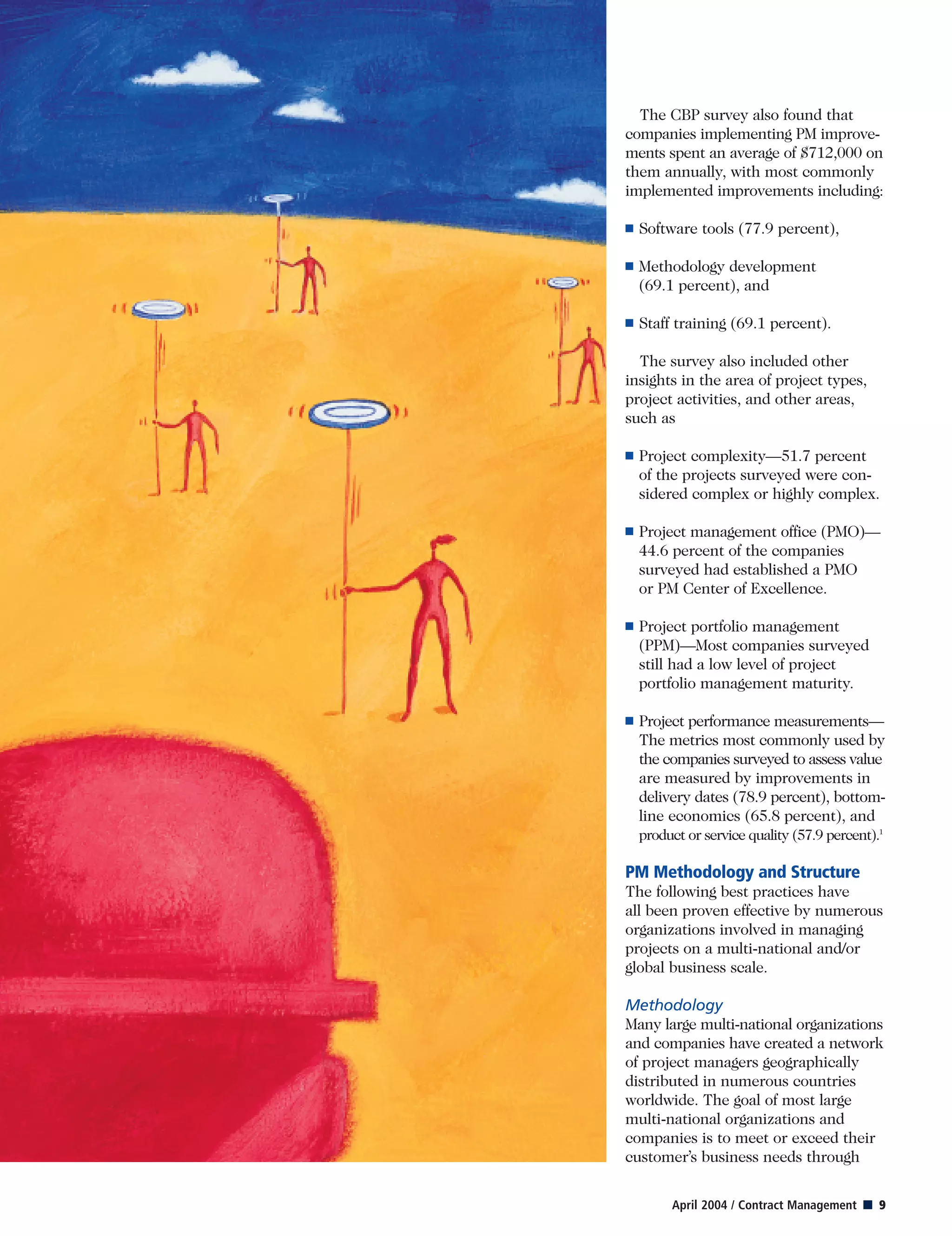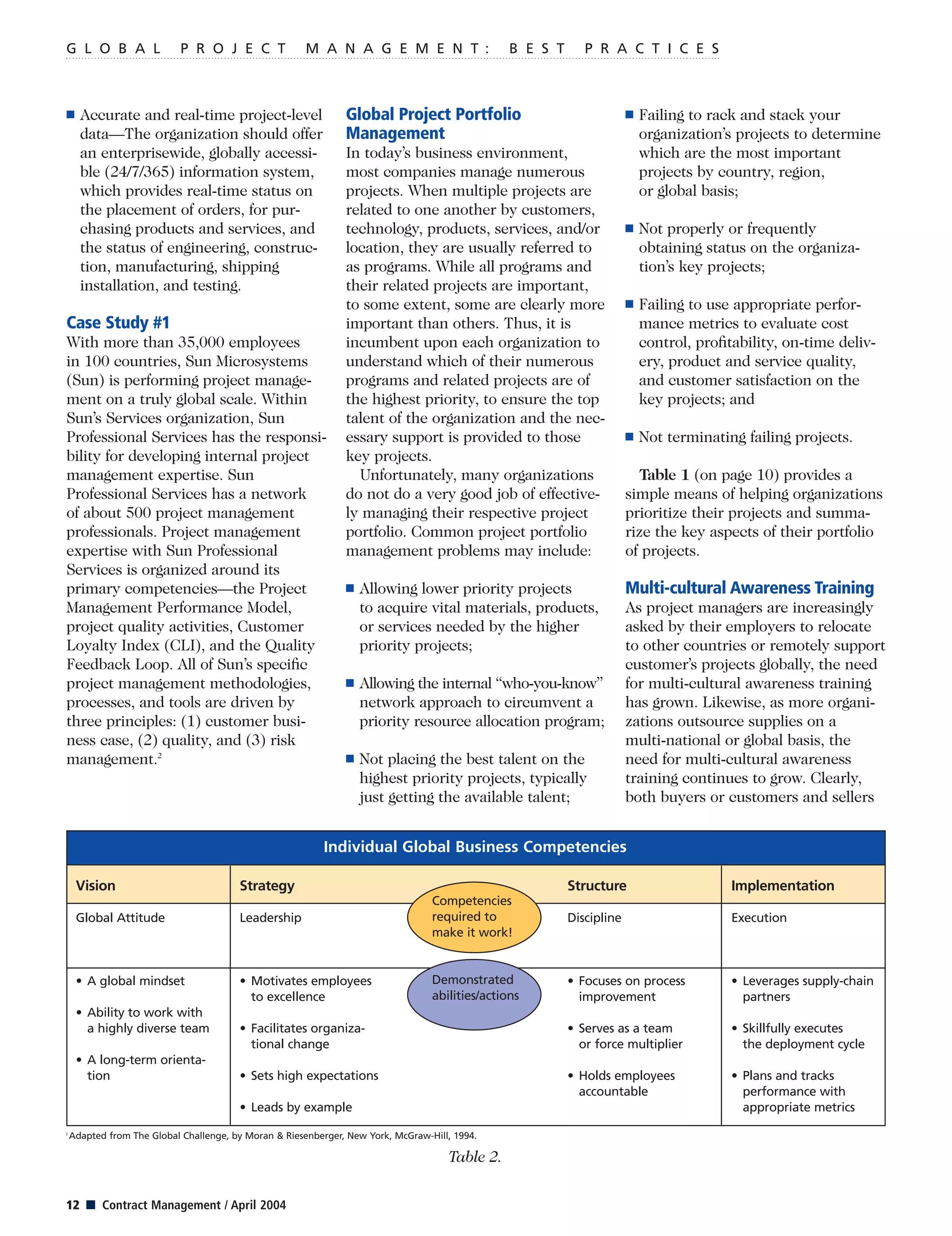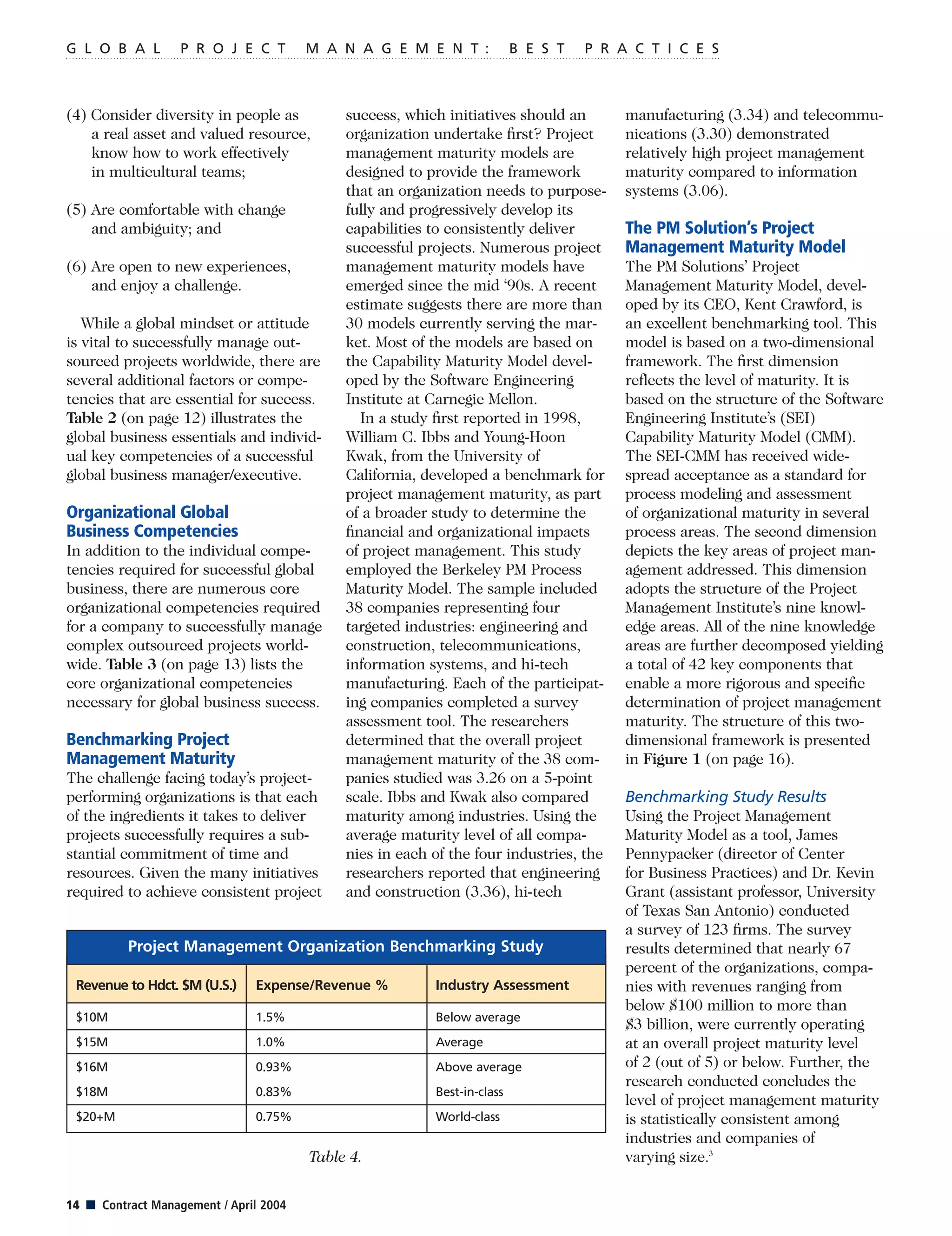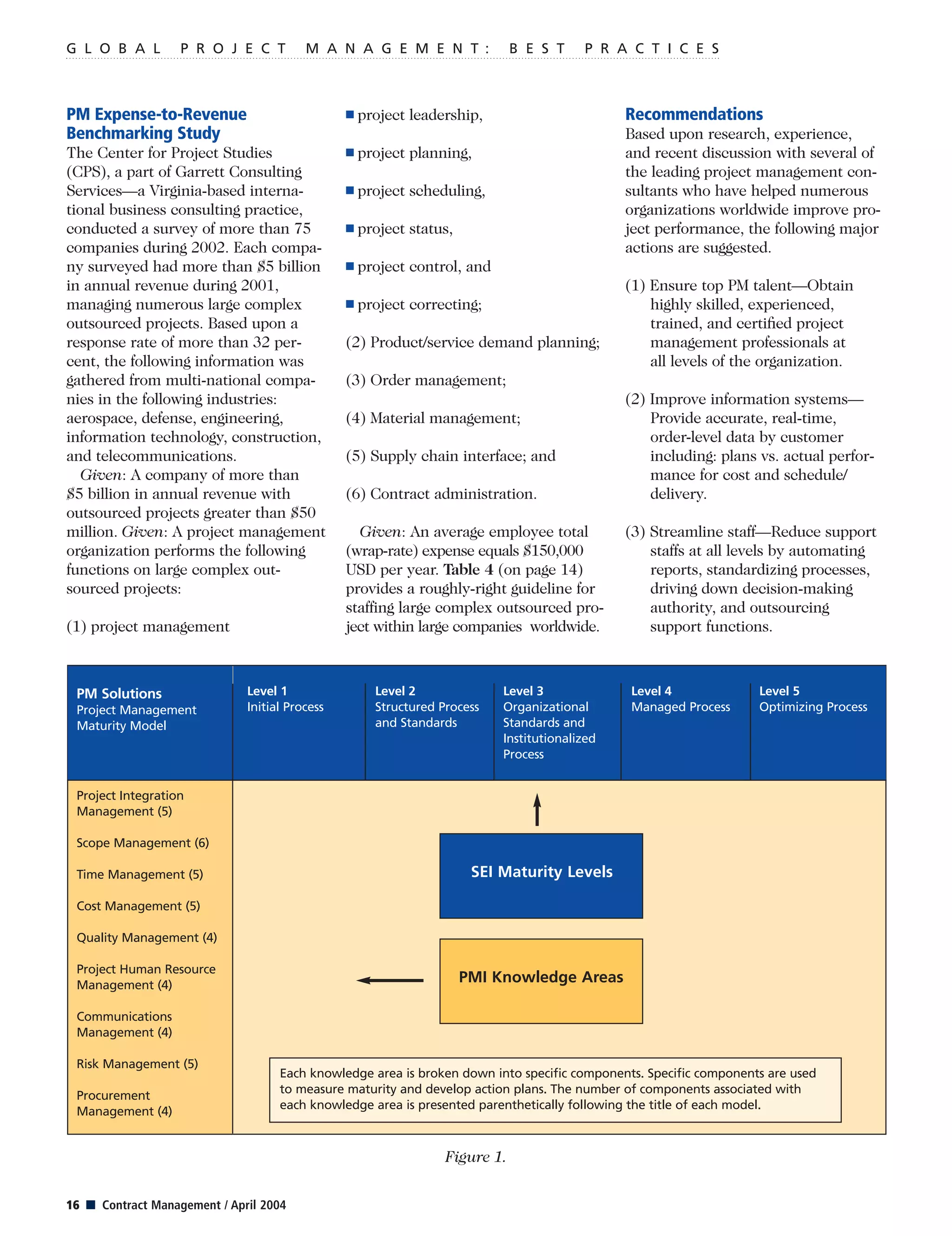This document discusses best practices for managing global projects. It identifies several key challenges in global project management including developing a consistent approach, resource allocation, and managing too many projects. It then outlines several best practices for global project management methodology and structure. This includes developing a standardized methodology, establishing executive sponsorship and global/regional project management offices for support, and using web-based knowledge management of best practices. The document also discusses the importance of project portfolio management, multi-cultural training, developing individual and organizational global competencies, and using maturity models to benchmark project management capabilities.







